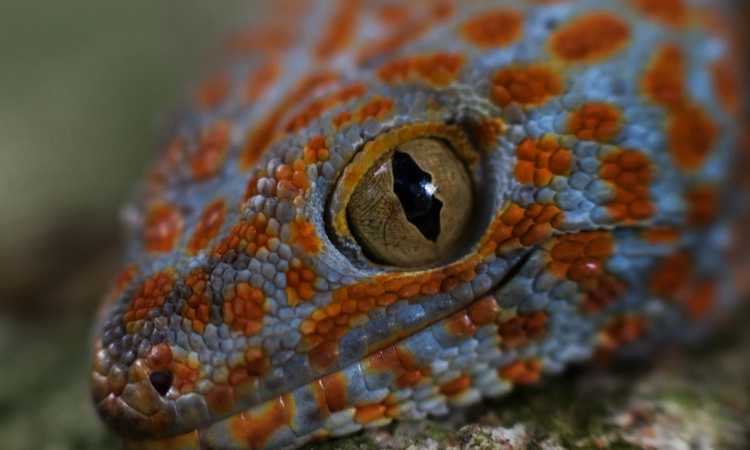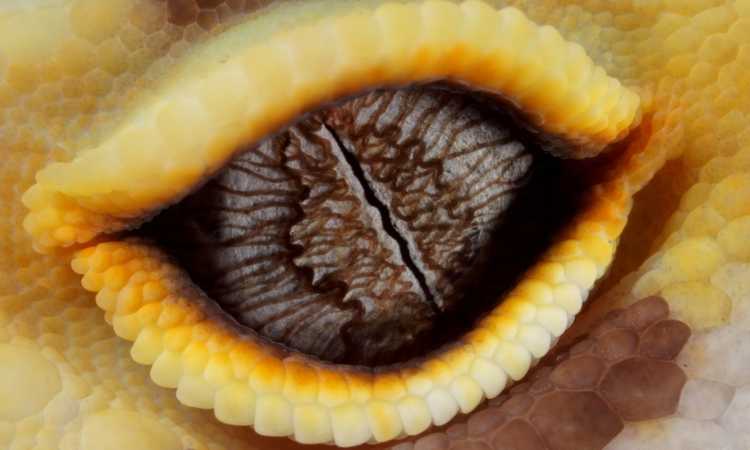In this article, we will explore some of the incredible facts about geckos that may surprise you. For example, did you know that there are over 1,500 different species of geckos? Or that they can range in size from under an inch to over 2 feet long? Geckos are truly amazing creatures and we hope that after reading this article, you will appreciate them even more!
Where Did Geckos Come From Originally?
Geckos are part of the Gekkonidae family. Gekkonidae is the family of geckos. It belongs to the Squamata order (group) and the Reptiles class.
The Jurassic period was a time when geckos flourished. Unfortunately, fossils from such small creatures are difficult to find so it is not known how their evolution occurred.
But fossils from the Eocene (50 million years ago) have been discovered that show that geckos’ ancestors were adapting to different habitats. These changes occurred as the habitats were changing. Australia and South America were one continent at the time of the Eocene.
It is amazing to see that our pets’ ancestors survived such life-changing events, including the relocation and splitting of two continents.
Mapping geckos all over the globe
Today, geckos can be found all over the world, including in North America, South America and Central America. These populations were not all created in these areas, but many more were brought there by people who traveled to those locations.
Many geckos were spread to all corners of the globe by the advent of international trade and sailing ships. While some of the reptilian travelers died on the journey, many lived and flourished in new places. The ability of geckos adapting to new environments allowed them to thrive and establish new populations.
A scientific name is used to identify reptiles (e.g. Eublepharis macularius) and a common name (e.g. leopard gecko). The scientific name is used to ensure accuracy and the common name is used to make it easier for you to pronounce and remember.
Geckos can be found everywhere on the planet, but they also can be found in many habitats and climatic settings. Banded geckos in the Southwest United States, like leopard geckos in Afghanistan and Pakistan, live in deserts. The green tree geckos in New Zealand, however, live in densely wooded areas with high humidity.

Understanding different gecko species
The body shape of all geckos is similar. The body is short and squat with slender legs. Skin has fine, smooth scales. Some geckos may have granular (or bumpy) scales. Others might have tubercles (more pointed) or keeled scales. Although the head is often larger than the body, some species, such as day geckos, have a more streamlined look.
Geckos can see and use their eyes to find food and avoid predators. While many geckos can smell food before they eat it, vision is the most important sense.
Diurnal geckos (active during daylight hours) have round pupils, while nocturnal species (active at night), have vertical pupils. The irises are often marbled, which gives the eyes a unique appearance. While some gecko species may have moveable eyelids (some are able to open and close their eyes), most others have transparent, fused lids that protect the eye from minor injury.
The feet of geckos have been an amazing sight for many years. It is amazing that many gecko species can walk straight up glass windows (or the side of a glass cage). The adhesive pads on the feet are responsible for this ability.
The pads look like bristles made from keratin, similar to our fingernails. Each bristle’s end is also split when magnified. Split bristles enable the gecko’s ability to stick to many surfaces, including glass. They can also move under overhanging surfaces such as the roofs of houses.
Ground dwellers such as leopard geckos or Madagascar ground geckos have fewer bristles than arboreal (lives in trees) geckos such as green tree geckos or tokay geckos.
Other interesting characteristics are common among geckos. One species of New Caledonian geckos, and many Australian geckos, will spray a foul-smelling liquid out of his tail if threatened. The secretions can be sprayed up to 30 centimeters away from the tail by tiny glands. These tiny geckos are a surprise to predators looking to feed on them.
All About Leopard Geckos
The subfamily Eublepharidae includes leopard geckos, one of the simplest forms of gecko. Except for one species, all geckos in this family are terrestrial (live on the ground) and arboreal (above the ground, on trees or on homes). The eyelids of leopard geckos, as well as others in the family, are moveable. However the lower lid moves up and the upper lid goes down. A common characteristic is the detachable, fat tail.
Leopard geckos living in harsh habitats
Leopard geckos’ natural habitat is Afghanistan, Iraq, Iran, Pakistan and northwestern India. Although there are many mountains in this region, some estimates say that only 49 percent of Afghanistan’s terrain is mountainous. However leopard geckos can be found in semi-arid deserts or plateaus. The wind blows almost continuously from June to September, bringing with it intense heat, drought, and sandstorms. Whirlwinds can occur at speeds up to 175 mph (282 km/h).
Leopard geckos can thrive in these harsh and unforgiving environments. Leopard geckos protect themselves from heat, drought and sandstorms by hiding under rocks and other heavy debris, such as concrete, rocks that hang overhanging ledges, hard packed dirt, or man-made objects. Because the sand and dirt beneath these rocks and debris is cooler than direct sunlight, it keeps the geckos cool and dry. Additionally, any moisture left in the ground will condense under the rocks, where geckos can take it up.
Leopard geckos will hide and sleep during the day and then come out at night to hunt and forage. They hunt small insects and worms as their prey.
Read This: A Guide to Proper Gecko Veterinary Care

Leopard Geckos In Captivity
Since the 1970s, leopard geckos have been kept in captivity and are now one of the most domesticated species of lizard. Leopard geckos, along with parakeets, goldfish, dogs, cats and parakeets, have found a home in our homes as well as our hearts.
Although it is not clear when leopard geckos first became pets, recent history shows that leopard geckos were bred in captivity for many years, producing tranquil lizards who are well-adjusted to life in captivity. Leopard gecko breeders have been creating a wide range of colors and patterns since the 1990s. These include yellow, orange and black spots, stripes, jungle patterns, and many more.
Apart from their beautiful appearance, leopard geckos are also very popular for their calm demeanors as adults (babies can be quite feisty). Leopard geckos rarely bite and, if they do bite, it is rare for the skin to be broken. Leopard geckos will settle quickly if held in the hands and may even enjoy a brief gentle touch.
Although leopard geckos are tolerant of handling, they will bite if you hold them too tight. Gently hold your pet gecko and wrap your hand around its body to make them feel comfortable with you holding them.
In conclusion, there are many incredible facts about geckos that will surprise you. For example, did you know that geckos can lose their tails as a defense mechanism? Or that they can climb walls and even ceilings? Geckos are truly amazing creatures and we should all take the time to learn more about them!
Read this: Best Tips on How To Care for Your Leopard Gecko

Hi – I’m Erika, the lead gecko enthusiast here at Geckopedia! I write articles about pet geckos, including what to feed your leopard gecko and how to help your pet gecko live a long, happy life! I graduated with advanced degrees from UC-Berkeley, the University of Southern California (USC) and Indiana University-Bloomington, where I studied Biology and Animal Science. I use my experience to help others learn about gecko care, and I am an advocate for all topics gecko related!
